 |
Langley Research CenterTurbulence Modeling Resource |
Jump to: SA-RC Results, SSTm Results, SST-Vm Results, SSG/LRR-RSM-w2012 Results, Wilcox2006-klim-m Results, K-kL-MEAH2015m Results, EASMko2003-S Results, K-e-Rt Results
Return to: NACA 0012 Validation Intro Page
Return to: Turbulence Modeling Resource Home Page
2D NACA 0012 Airfoil Validation Case
SA Model Results
Link to SA equations
Note that thorough
grid studies were not performed for validation cases such as this one.
Some effort was made to ensure reasonable grid resolutions, but there may still be
small noticeable discretization errors. Therefore, these validation results shown should be considered
representative, but not "truth."
(See the NACA 0012 Numerical Analysis Case for a
representative verification exercise of this airfoil case.)
Above SA results are from seven independent
CFD codes: CFL3D (NASA LaRC, USA), FUN3D (NASA LaRC, USA),
NTS (NTS, Russia), JOE (Stanford, USA), SUMB (Stanford, USA),
TURNS (Stanford/Maryland, USA), and GGNS (Boeing, USA).
Both CFL3D and FUN3D used freestream value of the SA turbulence field variable (relative to laminar)=3.
Please read note 5 on Notes on running CFD page.
The first six codes all used the same 897x257 grid, whereas GGNS is a grid-adaptive code.
All seven codes gave very close results (max 1% difference in lift, 4% difference in drag).
These small differences are due to discretization errors, iterative
convergence differences, boundary condition differences, and/or
possible code-to-code implementation-detail differences.
(Limited tests with CFL3D indicate that the effects of discretization errors on lift and drag for
the 897x257 grid are smaller than the max differences listed above. However, complete
grid studies involving all codes would be required to learn the effects for each code.)
See NACA 0012 Numerical Analysis Page for more discussion
about numerical issues associated with the NACA 0012 airfoil case.
Note that these are compressible code results
at "essentially incompressible" conditions of M=0.15.
There may be a very small influence of compressibility.
Only the CFD data files from CFL3D are given here for reference:
n0012clcd_cfl3d_sa.dat,
n0012cp_cfl3d_sa.dat, and
n0012cf_cfl3d_sa.dat.
A typical CFL3D input file is:
n0012_cfl3d_typical_sa.inp.
A typical FUN3D input file is:
fun3d.nml_typical_sa_2.
Summary of CFD SA Results:
Behavior of model near CLmax:
The behavior of the SA model near maximum lift for this 2-D case is shown in the following plots (CFL3D only).
The cases were run every 1 deg (starting at 15 deg.), at least until CL,max was approximately attained.
An approximate CL,max range from experiments (McCroskey, AGARD CP-429, July 1988; also NASA TM 100019, October 1987)
is highlighted in the first plot by green dashed lines.
Note, however, that experimental data near maximum lift no doubt contains a significant degree of three-dimensionality.
Also, these CFD results are still on the 897x257 grid, and there is likely to be significantly more grid sensitivity
for the higher angles of attack than for the lower angles of attack shown above. Therefore, the results below
should only be viewed qualitatively.
Jump to: SA-RC Results,
SSTm Results,
SST-Vm Results,
SSG/LRR-RSM-w2012 Results,
Wilcox2006-klim-m Results,
K-kL-MEAH2015m Results,
EASMko2003-S Results,
K-e-Rt Results Return to: NACA 0012 Validation Intro Page Return to: Turbulence Modeling Resource Home Page
Responsible NASA Official:
Ethan Vogel
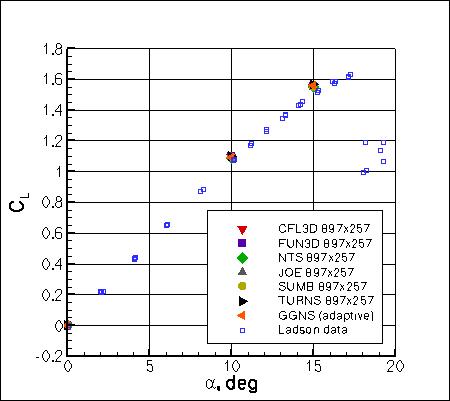
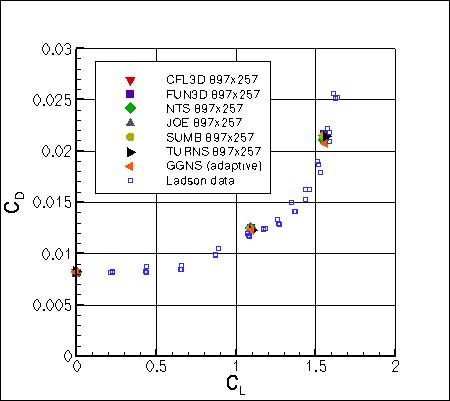
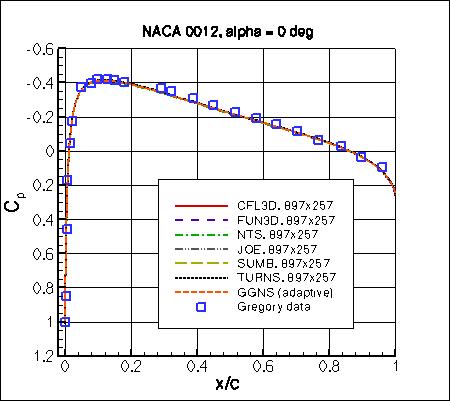
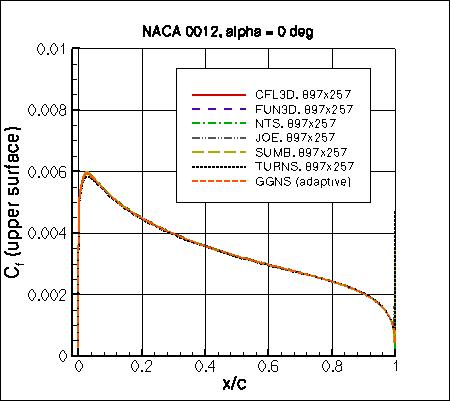
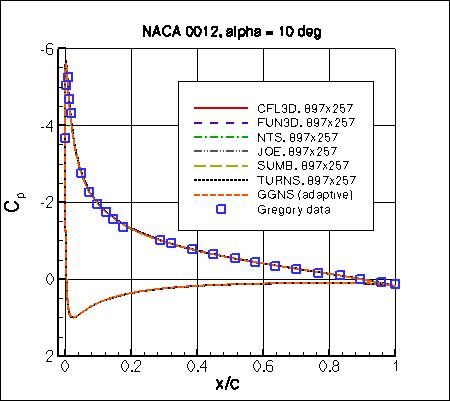
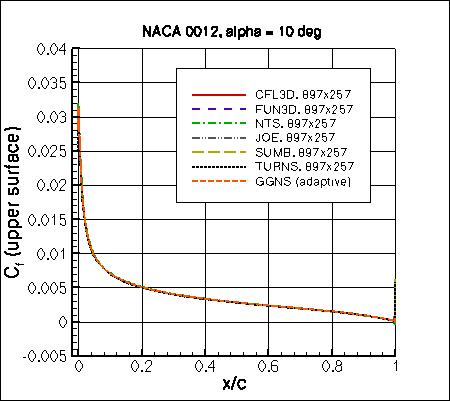

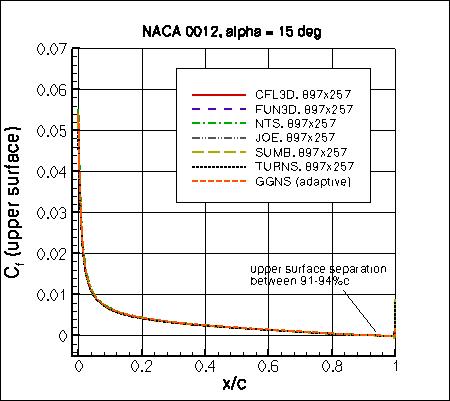
CODE
CL (alpha=0)
CL (alpha=10)
CL (alpha=15)
CD (alpha=0)
CD (alpha=10)
CD (alpha=15)
CFL3D
approx 0
1.0909
1.5461
0.00819
0.01231
0.02124
FUN3D
approx 0
1.0983
1.5547
0.00812
0.01242
0.02159
NTS
approx 0
1.0891
1.5461
0.00813
0.01243
0.02105
JOE
approx 0
1.0918
1.5490
0.00812
0.01245
0.02148
SUMB
approx 0
1.0904
1.5446
0.00813
0.01233
0.02141
TURNS
approx 0
1.1000
1.5642
0.00830
0.01230
0.02140
GGNS
approx 0
1.0941
1.5576
0.00817
0.01225
0.02073

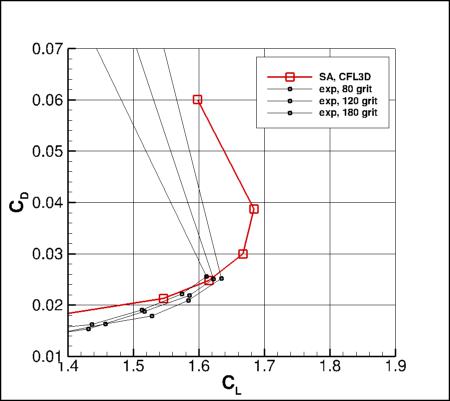
Page Curator:
Clark Pederson
Last Updated: 03/04/2025